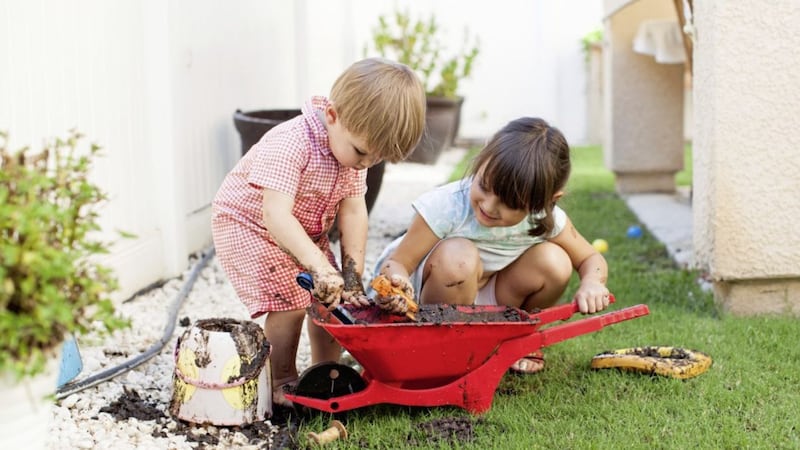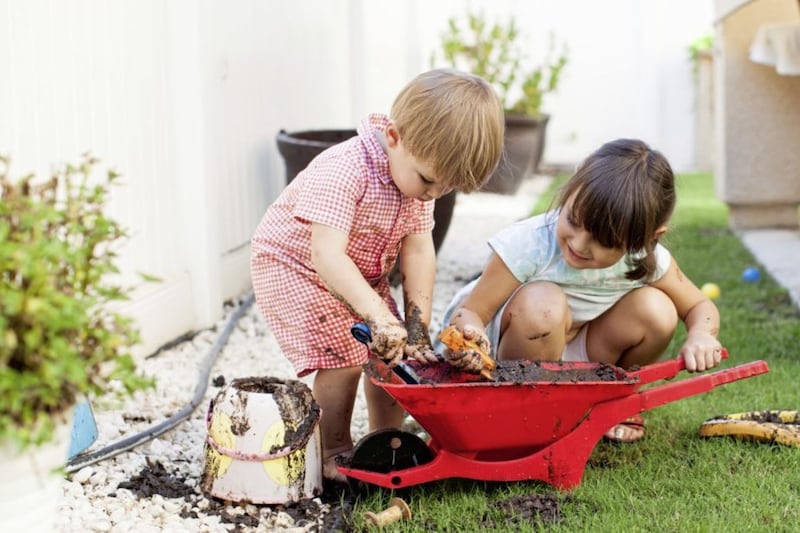WHEN children are truly engaged in meaningful play and investigation, they are more likely to experience deep-level learning. So, while sand, water, mud and bugs don't cost much at all, they are things that really engage children's minds.
SAND
Children need to be able to escape from busy lives into tranquil moments just as much as adults do. There is often too much emphasis on producing end products when all children need is some time to have rich sensory experiences in the natural world.
Dry sand allows them to fill, empty, pour and just watch and feel the stuff slide through their fingers. It provides children with an almost therapeutic session where they can take time out and just be.
Manipulating, lifting and carrying wet and dry sand enables children to develop hand muscles, fine motor control and hand-eye coordination. It gives them a chance to experience key maths concepts such as weight, volume and capacity. They begin to learn about which bucket or container has more and which has less. They can experiment with how many cups it takes to fill the largest bucket. They begin to recognise how one tall container of sand can equal a short, wide container.
When young children experience maths through play like this, they will have a much deeper understanding of maths concepts as they move through school later.
The adult’s role in all of this play is to make sure the sand is clean and that there is appropriate equipment available to support extended play, thinking and learning. Basic equipment can include buckets, spades, spoons, scoops, cups, sieves, tubes, stones, shells, twigs, small people and play animals.
Remember to keep sand covered when not in use in order to keep temptation away from cats and dogs. I find that ground covering used for weeds makes for a great cover material – it is lightweight and porous, keeping sand covered yet allowing rainwater to seep through and cleanse the sand.
It is also really important that we take time to be interested in what the children are doing, join in with them and engage in a natural conversation about what's taking place.
WATER
There is nothing children like more than to mix sand and water and make potions and concoctions. This is another type of therapeutic experience that involves digging, stirring, mixing, heaping, filling, emptying, pouring, patting, shaping, creating and imagining. Often in school settings sand and water are separated but really, they are so much more interesting and engaging when they can be mixed. It’s almost as good as going to the beach.
With just water, children love to explore how water supports floating, sinking, displacement, movement and how it facilitates and makes things move. So, a few pipes and plastic bottles in the back yard can really extend children’s thinking and learning about water and movement. Building suppliers have lots of fabulous equipment for supporting play that promotes higher order thinking. You can even have them create a system to facilitate the transport and flow of water from old pipes.
BUG HOTEL
Bug hotels have become quite in schools but you can create own in your yard. They don’t have to be fancy; they just need to be spaces where bugs and insects can rest and hide. All you need are bits and pieces of mostly natural materials such as wood, twigs, moss, dry leaves, clay bricks with holes or terracotta pots, roofing tiles, old logs, bark, pine cones and whatever else you can find. It’s a bit like a rubbish heap but you can present it beautifully just like the children did from St Eoghan’s PS (pictured).
Children love to watch the behaviour of the insects as they move in and out of their hotel. This is a great opportunity for you to name the insects and learn more about them with your children.
MUD KITCHEN
Mud kitchens, as we know them today, are a fairly new introduction to our outdoor spaces, but the concept is very much an age-old favourite thing to do outdoors.
It's a place where children can mix potions, experiment with materials such as mud, stones, water, sand, leaves and just about anything that can be found naturally in an outdoor space.
Young children can spend long periods of time being totally absorbed in mixing, stirring, imagining, chatting about and changing materials. It really is an extension to your sand and water play, the difference being that you're introducing soil to the play.
You need a small, preferably sheltered space in your garden or back yard. The home-made mud kitchens that are created from old pallets, sinks, basins, buckets and scrap materials are often best and enable parents and carers to design and create a space with their children – which is all part of the fun.
You can use old saucepans, tools and utensils in the mud kitchen or source them from charity shops. Make sure there are no sharp edges, splinters or rough surfaces. Purchased topsoil is best for use in a mud kitchen and it can be kept clean and free from pets by covering (as above).
It is also useful to keep a basin of soapy water close by so that children can wash their hands when they are finished playing and to avoid attracting vermin, avoid food items in this space.
:: Clare Devlin designs and delivers training in the primary and early years education sectors. Her Autumn 2019 Training Programme is available at Claredevlin.org





